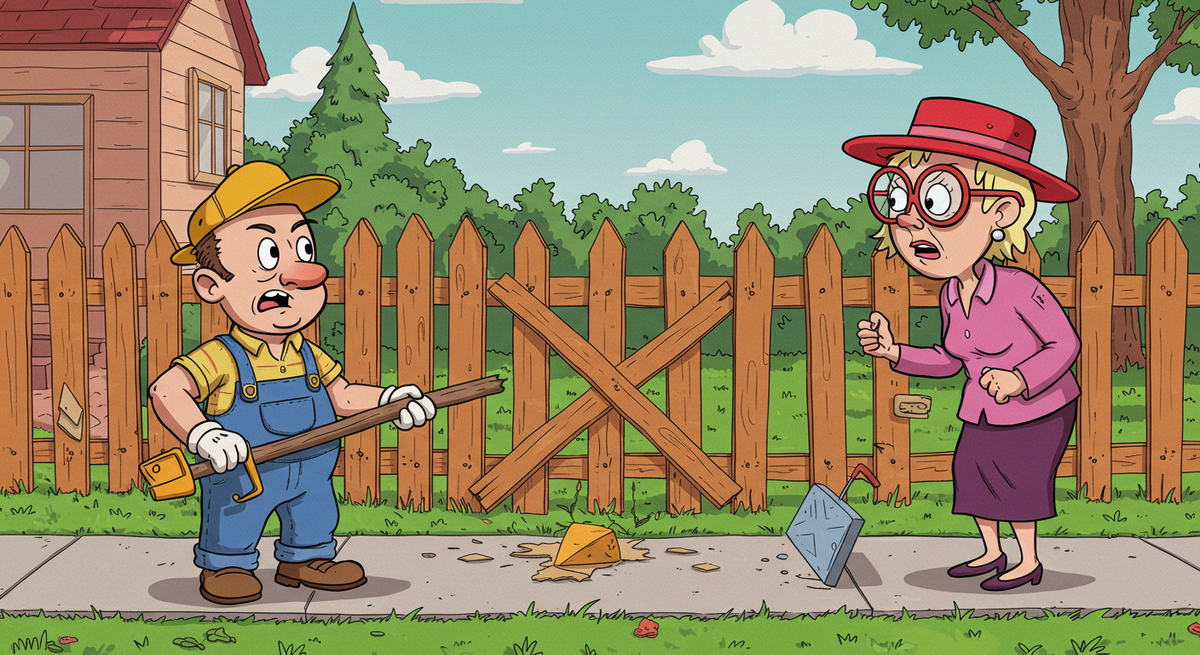Continuous Possession in Property Management [+ Downloadable Inspection Form]
Let's unpack this together, from what continuous possession means to how you, as a diligent property owner, can spot red flags early, keep records tidy, and avoid costly surprises.

If you've ever stepped onto one of your properties after a long winter only to spot a neighbor's fence inching onto your land, or tire tracks cutting a path through what used to be your side yard, you're not alone. These aren't just harmless oversights—they might be the start of something more serious: adverse possession. At the center of this issue lies the concept of continuous possession, a quiet legal force that can change the course of property ownership if left unchecked.
Let's unpack this together, from what continuous possession means to how you, as a diligent property owner, can spot red flags early, keep records tidy, and avoid costly surprises.
What Exactly Is Continuous Possession?
Think of continuous possession like a slow-moving, silent claim. It's when someone occupies and uses your land without your permission, and they just… keep doing it. Not just once, not occasionally, but steadily. Day after day, season after season, they treat the real property as if it's theirs. That's where things get tricky.
Legally, continuous possession means uninterrupted and ongoing use of a property for a certain period—often several years—without breaks or shared possession. And here's the twist: the person doing the occupying (known as the adverse possessor) doesn't have to live there 24/7. If they're using the land in a way a true owner typically would (think: farming, parking, fencing), they might meet the legal standard for actual possession.
It varies by state, but in general, courts look for a combination of what's known as the OCEAN framework for adverse possession claims:
- Hostile possession (no permission given)
- Notorious possession (it's visible, not hidden)
- Exclusive possession (nobody else shares the space)
- Continuous possession (no interruption during the legal timeframe)
- And, of course, actual possession
If all those are satisfied? A successful adverse possession claim could follow, and the original owner might lose rights to the property.
Why This Matters: Your Property's Story Could Be Rewritten
As someone managing or owning property, you already have a lot on your plate. But here's the reality: adverse possession law doesn't care if your calendar's full. If someone uses your land long enough under the radar, they might file an adverse possession case and become the legal owner.
Let's make it personal. Imagine a 6-unit rental property you've owned for years. The backyard is underused, and over time, your neighbor quietly expands their vegetable garden past the fence line. You notice the tomatoes. You don't say anything. Ten years pass. They file a claim. Suddenly, their carrots and tomatoes aren't just produce—they're proof of productive use, and now, part of your land ownership could shift to them.
That's not just frustrating. It's a potential blow to your property rights, and it can make future sales or refinancing a nightmare due to title defects. The moment a record owner ignores those creeping boundaries is the moment a potential adverse possessor begins building a case.
Real-Life Examples of Continuous Possession in Action
🧱 The Curious Case of the Creeping Driveway
Situation: A neighbor extends their driveway 10 feet into your property and uses it daily for 11 years. State Law: Requires 10 years for an adverse possession claim. Resolution: The property owner files legal action just in time and installs a fence. Lesson: Proactive steps like surveys and clear boundaries interrupt continuous possession and protect your legal ownership.
🏚️ Squatter's Surprise
Situation: A group of squatters occupies a boarded-up duplex for 7 years. Claim: They argue for legal ownership through actual possession. But: Their use wasn't notorious possession—they hid their presence. Outcome: The claimants possession didn't meet the standard. Takeaway: Inspections and documentation make all the difference.
🌾 Fields of Dispute
Situation: A farmer grows crops on unused acreage for over a decade. They argue: Productive use and exclusive possession. But: Old letters show the property owner originally gave permission. Outcome: No hostile possession, no claim. Lesson: Document all informal agreements. Even a casual email counts.
Legal Layers You Should Know
🏛️ Federal Rules (Especially HUD-Connected Properties)
If you're working with federal housing programs, make sure any land-use agreements include disclaimers that explicitly block prescriptive easement or adverse possession claimants from gaining ground—literally. HUD requires clear boundaries and written restrictions in encroachment permits.
📜 State Differences: The Possession Timeline
The timeline varies dramatically depending on where your property sits:
- Texas/New Mexico: 10 years similar to Wyoming's statutory period
- North Carolina: 20-year continuous possession requirement
- Maine: 20-year continuous occupation requirement
- New Jersey: 30 years for homes, 60 for woodlands
- Arizona: Accelerated 2-year continuous possession pathway in some cases (yes, really!)
- Iowa: 5-year continuous possession threshold under certain conditions
Some states even demand that the adverse possessor pay property taxes to qualify. And in many, having color of title—like a faulty deed or expired tax sale—can strengthen their legal concept of ownership. States like West Virginia have continuous possession exceptions when color of title is present.
Your 5-Step Game Plan: How to Safeguard Your Property
1. Inspect Like Clockwork
Quarterly or seasonal checks go a long way. Bring a camera, use mapping tools, and log everything. If there's a surprise shed or someone's planting corn where they shouldn't—intervene.
2. Mark Your Turf
From "No Trespassing" signs to old-school fencing, visible boundaries discourage encroachment and reinforce ownership rights.
3. Write It Down
Even if you've let a neighbor use a strip of your property for their driveway, write up an agreement. Include a disclaimer about adverse possession. It's a small step that can save you big time.
4. Act Fast
If you notice someone settling into your land, don't wait. Send formal notices, call an attorney, and document everything. The clock on continuous possession is always ticking. For strategies on defending against continuous possession claims in North Dakota and similar situations, quick action can reset the timeline entirely.
5. Use Your Land
Even if it's just seasonal mowing or putting up signs—productive use shows you're the rightful owner and makes it harder for someone else to claim the space.
📄 Canva-Ready Property Inspection Checklist
Download this PDF and upload it to Canva to create an editable, brandable version for your property management company.
1. Download this PDF
2. Go to Canva.com → Upload → Select this PDF
3. Canva will convert it to an editable document
4. Customize colors, fonts, and add your company branding
5. Share with your team or print as needed
A Quick Glossary of Must-Know Terms
- Adverse Possessor: The person trying to claim your land without your permission.
- Prescriptive Easement: They don't own the land, but they gain the right to use it forever.
- Color of Title: A document that gives the illusion of legal ownership, even if it's flawed.
- Hostile Possession: They're not squatting with your blessing.
- Notorious Possession: They make no effort to hide their use.
Understanding uninterrupted continuous possession in New Hampshire and other states helps illustrate how these concepts work in practice.
Common Questions (And Real Answers)
Can tenants become adverse possessors?
Not usually. Their stay is with your permission, so it's not hostile possession. But beware of holdover tenants who stay after a lease expires.
Does paying taxes help their case?
Sometimes. In some states, adverse possession law requires the squatter to pay taxes during the continuous possession period.
Can I interrupt possession?
Absolutely. Even a simple fence or legal notice can reset the clock.
Wrapping It All Up
Here's the heart of it: continuous possession is slow, sneaky, and silent. But with sharp eyes, good records, and quick action, you can protect your land, your title, and your peace of mind.
Remember:
- Inspect quarterly
- Mark boundaries clearly
- Document everything
- Respond fast
- Use your land actively
Mastering this isn't just about avoiding headaches—it's about telling the right story of ownership, where you stay the hero of your own property journey.
For a comprehensive understanding of all the legal elements involved, explore the OCEAN framework for adverse possession claims. Want to see how your state compares? Check out our data visuals on squatters rights laws by state to understand the varying timelines and requirements across different jurisdictions.
And hey, if you ever spot a suspicious fence post after a long weekend away, you'll know exactly what to do.





